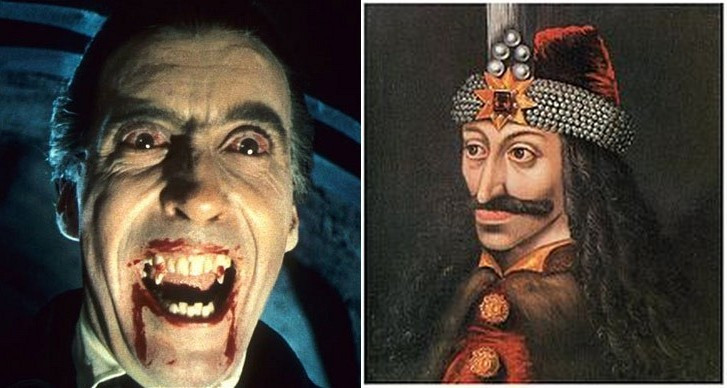Halloween 2012: On the Hunt for Count Dracula [BLOG]

Upon arriving in Brasov, one of the main cities in Transylvania, I was somewhat relieved to see how normal everything seemed. My train journey there from the Romanian capital Bucharest had been filled with tales of gothic castles, thunderstorms and vampires craving the blood of naive British tourists. And yet, as I exited the train station, I became almost disappointed by the mundanity of it all. The locals milled around with shopping bags, and there wasn't a medieval peasant or torturing device in sight. It was only when I joined the queue at the cash machine that I received my first real fright of the trip.
"Beware!" someone cried from behind me, and then again, with even greater urgency. "Beware!" I turned to see a man dressed solely in black, his eyes rolling around in their sockets, his whole body gnarled and crooked as a tree.
"What do you want?" I stuttered, ready to leap back on to the train I had just arrived on. "Beware!" he cried again, "that cash machine charges you for transactions. You'd be better to use the one across the road."
"Oh thanks," I shrugged, as he led me there.
It turned out the man's name was Vlad, and very friendly he was too. I even had a photo with him before we went our separate ways, although upon receiving the negatives, there is only an empty space where he should have been...
My day exploring the medieval houses and crooked streets of old-town Brasov was a fantastic experience as I weaved round narrow alleyways and walked through forest terrain to visit sights such as its famous Black Church. With a name as ominous as "The Black Church," I really feel that signs depicting it should be followed by an ellipsis and the words, "Mwoahahahaha." I have written to the Romanian tourist board with this suggestion but as of yet have not received a response.
The next day I ventured deep into the heart of the Carpathian Mountains to visit Bran Castle, the inspiration for Dracula's home in the Bram Stoker novel. Written in 1897, the book has spawned a wealth of theatrical and cinematic interpretations, and can be credited as the blueprint for modern vampire lore. Incidentally one poorly translated sign within the castle also informed me that Dracula was in fact, "the second book published after the Bible." Who knew!

Still, the connections between Transylvania and the novel are loose ones. Stoker himself never actually visited Romania but was inspired by a lot of the folklore that surrounds the Transylvania region. Folklorist Aurel Candrea talks of the idea of the "strigoi," the walking dead who by day appear normal but by night "kill children and suck their blood, steal milk from cattle and rob the fruits of the harvest".
According to legend a roasting stick must be impaled into the strigoi's heart to stop it roaming from its grave. This morbid fascination with impaling also leads us to Stoker's inspiration for Dracula himself, the aptly nicknamed Vlad the Impaler. A bloodythirsty 15<sup>th Century ruler, he used this method to murder his enemies.
And yet, despite being born in Transylvania, the only connection between Vlad and Bran Castle was his imprisonment there for two months after being captured by Hungarian King Matei Corvin in 1462. Further dispelling fact from fiction, Stoker's description of his setting as "a vast ruined castle, from whose tall black windows came no ray of light, and whose broken battlements showed a jagged line against the moonlit sky" contradicts a genuinely enchanting fairytale castle. This is mainly due to its restoration by Queen Marie of Romania, who lived in the castle with her family from 1920 until their expulsion by the communist regime in 1948.
I would never have expected to describe a castle as cosy, especially one credited as the home of Count Dracula and yet, recreated as it is to resemble the interior of the royal family home, I never felt more at home myself.
"No place could better dispel the myth of dark horrors lurking within Transylvania," I pondered upon travelling back in the encroaching darkness.
And yet one troubling fact still irked me. Upon her death Queen Marie's heart was brought back to Bran and placed in a chapel very near to the castle as a touching tribute to her love of what was once her family home. Suddenly it dawned on me as memoires of the strigoi flooded back. "A touching tribute...or is that what they want you to think?" I gulped. I shall never know the answer and yet I could have sworn to this day I heard the echo of a woman's laughter as I sped away from Bran Castle and Transylvania.
Rebecca Hussein is a freelance journalist and theatre critic who often writes about her travel exploits across the globe. A collection of her writings can be found at https://rebeccahussein.wordpress.com/
© Copyright IBTimes 2025. All rights reserved.





















